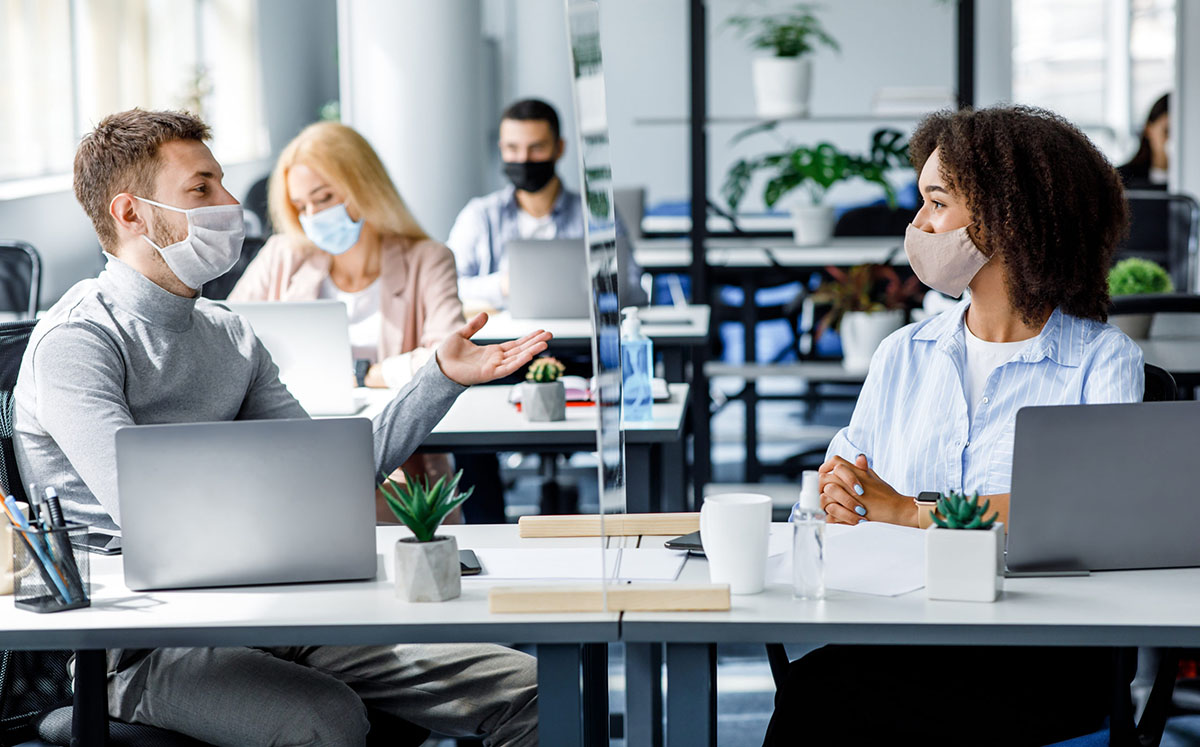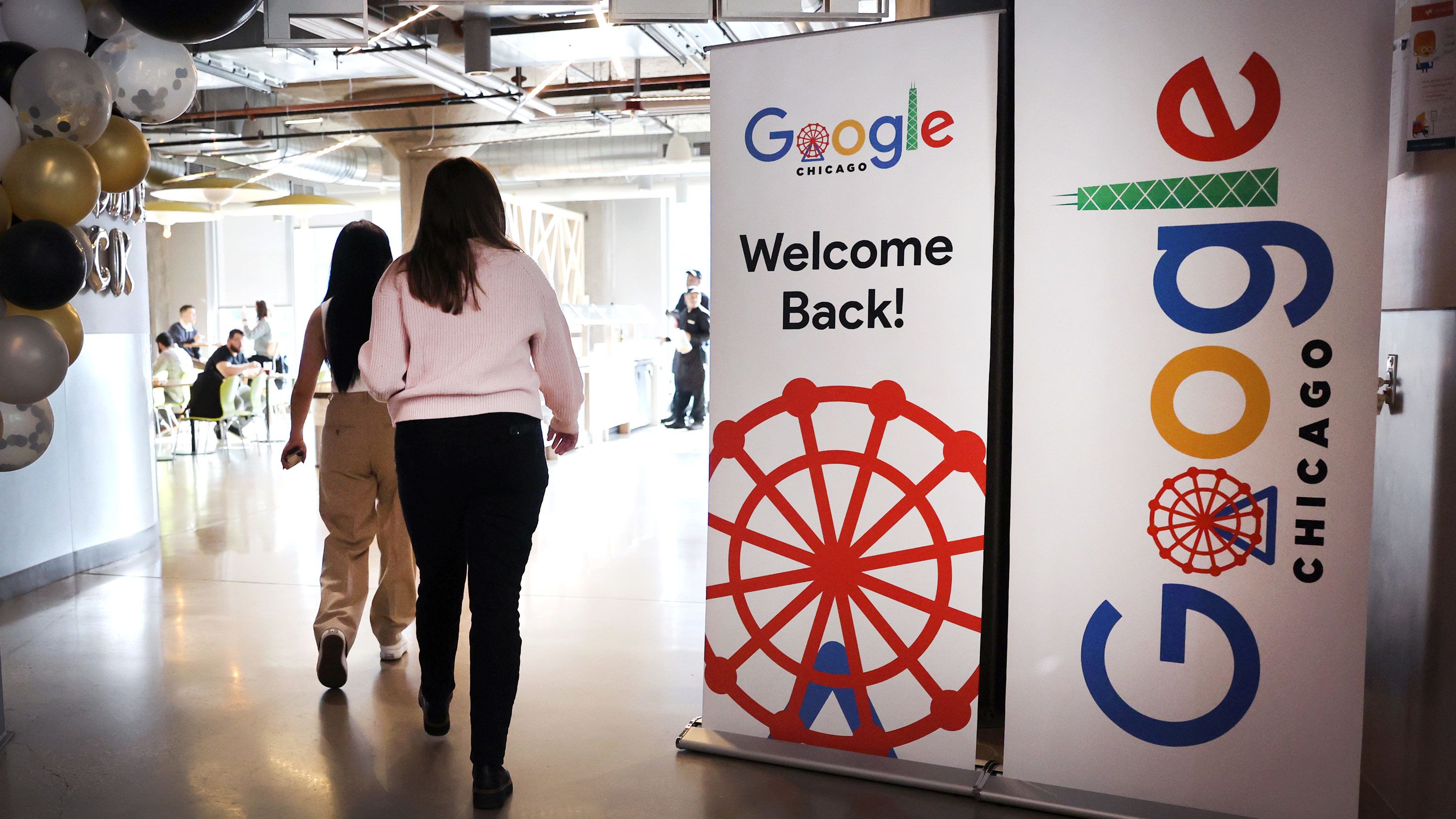Return-to-Office, a $1.3 Trillion Problem: Global Perspectives

Return-to-Office, a $1.3 Trillion Problem: Global Perspectives
The majority of facets of life have returned to normal in the newly emerging post-pandemic period. People are thronging the theatres, visitors are clogging up the airports for summer vacations, and kids are going back to school. The one thing that has steadfastly stayed unstable is the workplace.
Companies, workers, and governments are still working out how to adjust to long-lasting changes to corporate life three and a half years after millions of office-goers were sent home in enormous numbers. But striking contrasts across countries and cultures have developed, with workers in Asia and Europe often returning to their workplaces at a higher rate than those in the Americas.

Researchers discovered that while Asian countries did a better job of hiding Covid-19 in the first year of the epidemic, individuals there did not become as acclimated to working from home, making the move back to the workplace simpler. The UK has one of the highest percentages of remote work, while France has one of the lowest. However, some of Europe’s nations are setting the bar with their legislation promoting flexible hours.
And then there are countries like the US, where politicians have mainly kept quiet, leaving employers and workers to deal with the changes on their own. After Labour Day, people return to their regular schedules after their summer vacations, therefore businesses like Amazon.com Inc. and Zoom Video Communications Inc. are putting more pressure on employees to return to their offices for at least part of the week.
Even yet, workers are subject to a wide range of regulations based on their employers, supervisors, or locations. Five days a week are required for employment at Goldman Sachs Group Inc. It takes four days at Walt Disney Co.; it takes three days at Google, Amazon, and many other companies. In the greatest economy in the world, hybrid schedules are now the standard for office workers.

Two years ago, when Covid was still circulating at crisis levels and “the Great Resignation” and “lying flat” were the lingo of the day for employees defying conventions, the chaotic character of RTO was understood. As a result of cooling economies, hiring has slowed from its frenzied pace two years ago in many sectors, providing managers greater power to make decisions.
whereas many employees are uneasy about layoffs and other cost-cutting initiatives. However, there are still many unanswered problems regarding the function of offices, the blending of work and life, and the evaluation of productivity and remuneration.
Its outcome will have a big impact on the economy: According to the McKinsey Global Institute, pandemic trends might cause the value of real estate in major cities all around the world to decrease by as much as $1.3 trillion by 2030. Phil Kirschner, an executive advisor at McKinsey & Co. in the US who counsels leaders on real estate and workplace initiatives, said, “Everyone is asking, ‘Is this going to come back?'” He explained, “What we’ve done is Band-Aid some tools together to stop the ship from sinking.”
Casting whole continents as monolithic is difficult. Despite the fact that the US has embraced remote work more than other countries, more than half of American workers still toil in the field with little opportunity to work from home. In contrast to their Wall Street rivals, Japan’s top lenders do not maintain a minimum number of office days each week. The manufacturer of Dove soap in Europe, Unilever Plc, gives desk-based employees a lot of freedom over where and when they work and has tested four-day workweeks in a number of nations.

Regional differences, however, have been influenced by both cultural and structural reasons, according to Phil Ryan, director of JLL City Futures in London and a division of Jones Lang LaSalle Inc.’s worldwide research and analysis division.
certain of it is unquestionably cultural; certain regions have higher expectations of visitors, according to Ryan. “In some locations, dependable public transport is important. Another significant difference is house size; Americans feel that their homes are better places to work since they have larger workplaces at home.
Hong Kong residents no longer have as many reasons to work from home because to the city’s small flats and effective public transit infrastructure. In March, tube usage there topped 2019 levels, and vacant office space is more closely associated with a decline in Chinese investment than remote work. In comparison to pre-Covid levels, New York’s subways are still only 70% filled during the week, and only around half of employees are back at their workplaces at any one time.

According to Mark Mortensen and Henrik Bresman, professors at the INSEAD business school, working remotely is often more popular and tolerated in the US. The prevalence of “knowledge workers” in the fields of technology, finance, and business services, which rely heavily on computers and are therefore more suited for remote work, is partly to blame for this. According to study by a team of economists led by Stanford University economics professor Nicholas Bloom, Americans in IT, finance, and professional services work from home nearly a full day more each week than those in roles in government and health care.
And little is expected to change in this regard: According to Mortensen and Bresman’s research, Americans are almost twice as likely as those in other countries to say that their productivity while working remotely is at its highest level. A working paper on data entry employees in India, however, discovered that those who worked from home were 18% less productive.

According to Mortensen’s study, employees in Europe and Asia are more worried about missing out on social relationships with coworkers than Americans. Consider Andrea Lovato, managing partner of the Milan-based F&P Equity Partners. While he doesn’t have anything against remote work, he claims that it has “many more advantages” since it fosters stronger relationships with coworkers, more spontaneous invention, and more employee engagement.
Despina Katsikakis, the worldwide head of the workplace research and insights group of real estate behemoth Cushman & Wakefield Plc, asserts that cities matter just as much as culture. “Cities in Europe are more walkable and bring together work, life, and play,” said Katsikakis, a London-based urban planner. Therefore, compared to the US, where workplaces are more governed by zoning restrictions and located in more remote regions, European offices are more connected to diverse, active communities.
The differences have completely changed the commercial real estate market, where vacant offices and the steepest rate increases in a generation are putting some landlords in debt. A McKinsey analysis published in July examined the variations among cities and found that locations of New York and San Francisco with a high concentration of offices have had greater decreases in real estate demand combined with lower rates of office attendance than places like Paris and Munich. According to the firm, the value of office buildings in nine major cities might decline by as much as $1.3 trillion in the worst-case scenario, or around $800 billion.

Many Asian cities, like Paris, have cultures that encourage being present at work. According to a poll by the workplace design company Unispace, 43% of the workforce in Germany works four or more days per week. Due to its “996” culture, which mandates working from 9 a.m. to 9 p.m., six days a week, China has high rates of workplace attendance. Additionally, compared to the US, loyalty to employers is stronger in countries like Japan and South Korea. “The often-implicit assumption that the landscape looks similar across cultures and contexts does not hold up to scrutiny,” Mortensen claimed.
However, there are some universal similarities. According to Stanford’s Bloom, women and people with more education value working from home more than males do in all but a few nations. Ben Waber, co-founder and president of Humanyze, which analyses workplace collaboration data for several major organisations globally, said that industry might occasionally triumph over geography. As opposed to a manufacturing in Japan, “a software company in Japan will look more like a software company in the US,” he stated. However, research from a team led by Italian economist Andrea Lamorgese shows that American companies tend to have more sophisticated performance measurement and assessment systems, which are essential for remote work when managers can’t monitor employees in person.

In Europe, politicians have intervened to support more flexible work arrangements in an effort to assist define the future of employment. In response to the European Union’s 2021 “right to disconnect” proposal, which seeks to provide EU employees the legal right to disconnect from work-related duties and electronic communication outside of regular business hours, at least half a dozen countries have implemented or proposed laws to regulate remote work.
According to Ben Marks, co-founder of the Future Workforce Alliance, a forum of politicians, business executives, and academics focused on policy changes, the policy, which is already in effect in France, Spain, and Belgium, is supported by a majority of the European Parliament and may become EU law by the end of the year.
The freedom to disconnect is widely endorsed outside of Europe: Similar laws have been approved by governments from Colombia to Canada, and Kenya is also contemplating it. In addition, the Dutch House enacted a bill establishing the ability to work from home legally last year, and its Senate is anticipated to vote on it this year. The measure mandates that businesses take into account employees’ requests to work remotely, provided that their professions permit it, as long as the request is “reasonable and fair.”
According to recent statistics from Lightcast and Revelio Labs, the Netherlands ranks sixth internationally for the availability of remote employment, and several Dutch firms adopted flexible work policies during the epidemic.
The CEO of Mews, an Amsterdam-based company that makes software for hotels, Matthijs Welle, claimed that he had previously “never believed in work from home,” but that after closing offices in half a dozen places, he now permits his 800 workers in 20 countries to do so. He referred to the law, saying, “I think it’s needed to drive this conversation with more traditional managers, who have shut the door on it.”

A similar remote-work law was finally enacted by Ireland’s coalition government in April after months of delays due to concerns that the legislation was unfair to companies. Meanwhile, millions of British employees will soon be able to seek flexible working arrangements when beginning a job. Before, they had to hold off on making this request for six months.
In Belgium, workers secured the right to a four-day workweek at the same wage in February 2022. Additionally, the coalition government there approved new regulations for gig workers, defining the standards for classifying them as employees regardless of what their contract may designate them.
Right-to-disconnect opponents claim that in the asynchronous workplace of today, such regulations may be primarily symbolic. The “third peak” of productivity was observed around 9 p.m. during the epidemic, according to data from Microsoft Corp., the company that created the Teams collaboration and conferencing software.
Then there are some who have relocated to work remotely from brand-new places and frequently log on at odd hours. Lisbon and other Portuguese cities during the pandemic became a haven for digital nomads from the US and other countries who took advantage of favourable tax rates, affordable real estate, and a generous visa that was introduced in October and allowed remote workers to live in the sun-drenched country for up to five years.
According to Portugal’s immigration authority, 930 of these visas were issued in just six months, with Americans obtaining the majority of them. According to Nomad, a network for remote workers, Lisbon was the most frequented remote work hub in 2022, but so far in 2023, visits are down 32%. The government stated in February that it will stop its “golden visa” path-to-citizenship programme for foreigners who invest in real estate in the nation since rents and property prices in the capital city have skyrocketed. Ireland has followed suit, and other European countries are also closing their doors.

As a result, digital nomads are now searching outside of the US and Europe for employment opportunities; eight of the top 10 remote work hubs for 2023 are now located in Asia, including Tokyo, Seoul, and Ho Chi Minh City.
Labour Day in the US has come to symbolise a fresh drive for harsher office attendance regulations, and this year is no exception. President Ajay Banga wants employees back four days this week at the World Bank in Washington. Even a business like Workhuman, which offers employee appreciation programmes and takes pride in paying great attention to employee problems, has requested that the majority of its personnel return to the office twice a week starting this month. The summer is unrestricted, and then things return to normal in September, according to KeyAnna Schmiedl, chief human experience officer at Workhuman.
Leaders who continue to hold out hope that the workplace will return to “normal” will be let down since it has changed significantly. In the US, office occupancy rates have reached a plateau at only 50% of pre-Covid levels. Fridays are a ghost town in the lobby. According to a recent poll by the Federal Reserve Bank of New York, business executives complain about the impacts of working from home, but they also recognise that it has become commonplace. Work is now something individuals do rather than a location they go, and the specifics of when, when, and how it occurs are no longer fixed. “Covid was a portal we walked through,” said McKinsey’s Kirschner. “And we’re not going back.”

The COVID-19 pandemic has transformed the world of work in unprecedented ways. As organizations grapple with the complexities of reopening their offices, a significant challenge has emerged: the Return-to-Office (RTO) dilemma. This multifaceted issue, estimated to cost a staggering $1.3 trillion globally, encompasses a myriad of considerations. From health and safety measures to evolving employee preferences, this article explores the complex landscape of the Return-to-Office movement across the globe.
The transition back to the office is fraught with complexities, reflecting the unique situations faced by different regions, industries, and organizations. Here are some key dynamics that shape the global RTO landscape:
- Health and Safety Measures: Region-specific regulations and guidelines play a pivotal role in shaping RTO plans. Countries with stringent health protocols have slower, more cautious returns, while those with relaxed rules may see earlier office re-openings.he vaccination status of employees and the prevalence of new variants also influence RTO decisions. In countries with high vaccination rates, the return may be accelerated, while concerns about variants can delay plans.
- Hybrid Work Models:The pandemic has ushered in a new era of flexible work arrangements. Many employees now prefer a hybrid model, allowing them to work both remotely and in the office. Companies must adapt to this changing landscape.Balancing employee desires for flexibility with the need for collaboration and team-building in the office poses a significant challenge. Companies must tailor their RTO plans to align with these varied expectations.
- Real Estate Costs:Organizations are reconsidering their real estate strategies in light of remote work. Some are downsizing office spaces, while others are investing in more flexible, collaborative environments. Real estate costs are a significant factor in the $1.3 trillion estimate. Organizations need to determine how much space they genuinely need in the post-pandemic world.
- Technological Infrastructure: RTO requires robust technological infrastructure to support both remote and in-office work seamlessly. Investing in secure, scalable IT systems has become paramount for organizations worldwide. Cybersecurity is a growing concern, as the hybrid model introduces new vulnerabilities and challenges in safeguarding sensitive information.
In the United States, RTO timelines are diverse due to varying state and local regulations. Tech companies like Google and Facebook have announced long-term remote work options, while traditional industries tend to favor a gradual return.
Canada follows a similar trajectory, with remote work being embraced by many organizations. The Canadian government’s support for remote work through tax incentives further contributes to this trend.
European countries are treading cautiously. Countries like Germany and France have adopted phased approaches, prioritizing employee safety. The EU’s “right to disconnect” policy emphasizes a balance between work and personal life, shaping RTO plans.

The United Kingdom, while initially planning a full return, has adjusted its stance due to the Delta variant’s surge. Hybrid work models are now more common, especially in the financial sector.
In Asia, countries like Japan and South Korea have been cautious, with government initiatives encouraging remote work where feasible. In contrast, Australia has pursued a more flexible approach, embracing hybrid models.China’s stringent COVID control measures have led to more rapid office reopenings, with businesses returning to pre-pandemic norms.
Emerging economies like India and Brazil face unique challenges. With lower vaccination rates and limited remote work capabilities, these countries are experiencing slower RTO progress. Nonetheless, the pandemic has accelerated the adoption of digital technologies, creating opportunities for remote work and flexible arrangements.
.jpeg)
The Return-to-Office movement is a complex, multifaceted problem with significant financial implications. As organizations worldwide grapple with the decision to reopen their offices, they must carefully consider health and safety measures, evolving employee preferences, real estate costs, and technological infrastructure. The global RTO landscape varies widely, reflecting regional differences in regulations, cultural attitudes, and pandemic control measures.
In navigating this $1.3 trillion problem, organizations must strike a delicate balance between employee needs, business objectives, and evolving global circumstances. Ultimately, the success of the Return-to-Office transition hinges on adaptability, resilience, and a keen understanding of the unique challenges posed by this extraordinary period in history.




